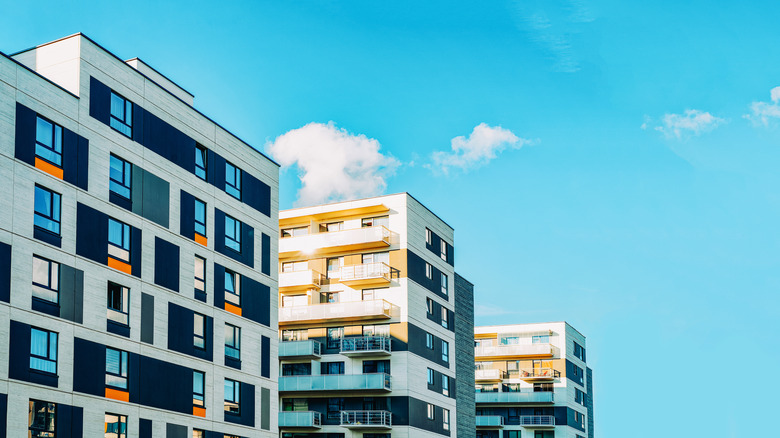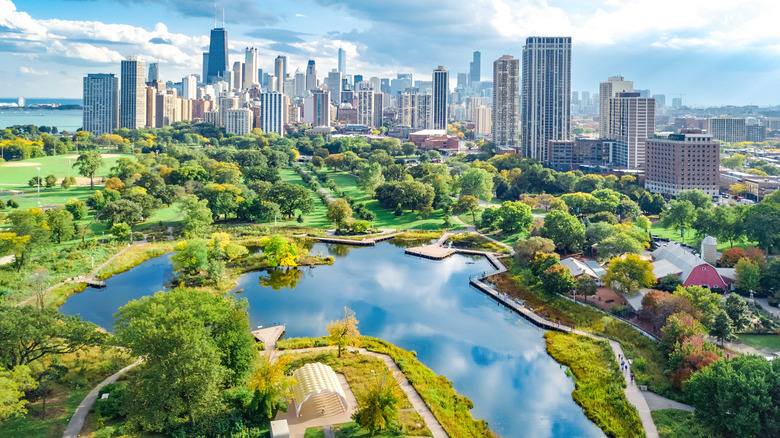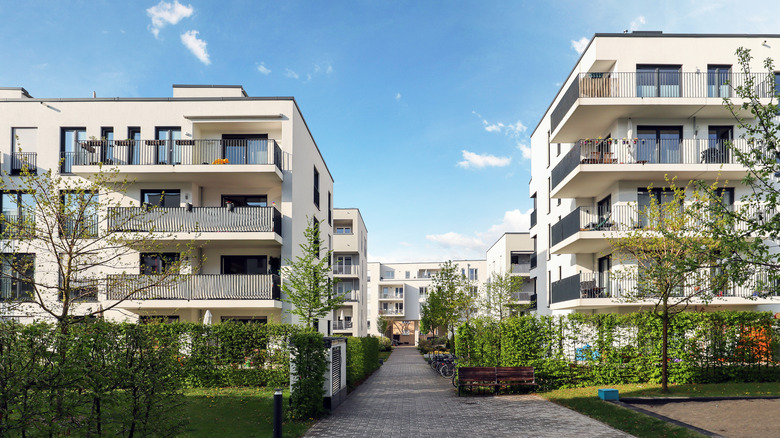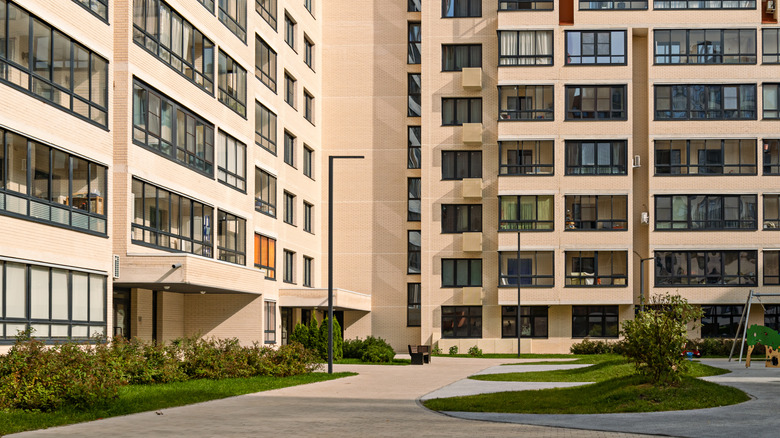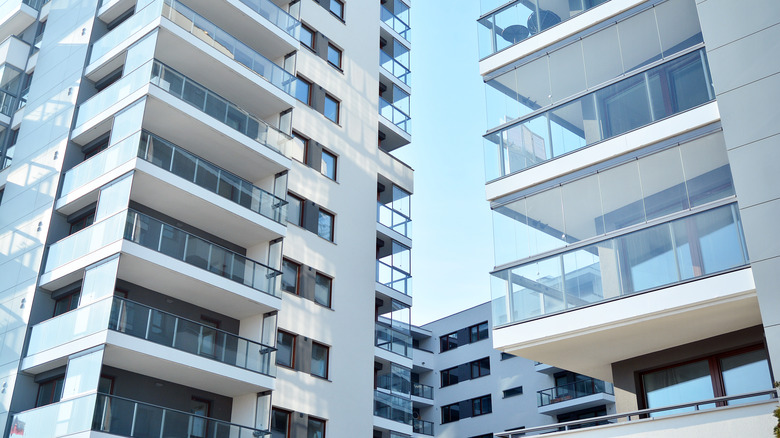Top 4 Mistakes You Should Never Make When Looking At Apartments
Renting is a big part of life for many people. While it may be your dream to one day own your own home, this is becoming a longer-term goal for millions of young people in the United States (and the trend persists across the world as well). The median age for first-time homebuyers is now 33 in the U.S., up from 28.5 in 1981, according to Financial Samurai. In fact, Financial Samurai notes that today's first-timer is older, on average, than at any time since 1981.
This all means that renting has become a larger part of typical adult life. Renters often call apartments their home, with the standard image of apartment life coming through this lens in today's marketplace. But many buyers in city environments are also in the market for an apartment to call their own.
Apartment living — as a renter — has its perks. For one thing, renters don't have to worry about expensive maintenance costs or the financial toll of a sudden replacement appliance or emergency plumber visit. Likewise, living in an apartment can bring you closer to the action in an urban environment (although the same can be said for apartment owners).
The truth is that apartments offer a wealth of opportunities and benefits. Selecting one that meets your needs is just as important as finding a house that serves you well. Continue reading to learn about four mistakes to avoid when apartment hunting.
Looking for apartments during peak moving season
CNBC reports that rental markets exhibit seasonal highs. Because so many younger people continue renting for many years into their professional careers, a knock-on effect has come into existence. College graduates leaving school and looking for an apartment to support their new job are scouring the market for their next great pad during the summer months. Likewise, apartments in cities and towns that support a thriving college community see a surge in viewings and lease signings leading up to the start of the new school year in August or September.
As a result of this wave of apartment seekers that hit the real estate market on a yearly basis, rental rates are often listed at their highest during this time. There are ample listings and a huge wash of interested potential tenants, all competing for great places to live in their chosen cities.
Finding a new place to live in the winter will give you access to a cooled-off marketplace, meaning you can take advantage of generally cheaper offerings, with CNBC noting that you can easily slash the price by $50 to $150 per month. The financial benefit is significant, and with less competition to work against, finding a great place to live is a far more casual affair, letting you really take in properties and make a smart decision for your needs.
Forgetting to prioritize commute times and needs
Your commute is one of the essential features of any place you may call home. An apartment might offer a wealth of amenities and additions that benefit your lifestyle, but if the space is a two-hour drive in rush hour traffic from your place of work, it is unlikely to provide you with the comfort and sense of home that you need it to.
Common notes that commute issues should play a central role in selecting an apartment because commute times and the means of transportation bleed into other aspects of your lifestyle and finances. Not only is a longer drive more time-consuming, but it also requires additional financial resources to pay for an increase in gasoline consumption. One reason that renters and buyers select an apartment that's farther away from their office is often a reduction in rent that comes with a less centrally located place of residence. But offsetting these savings by paying more in travel each day can make for a wash financially, and a larger drain on your financial and mental wellbeing.
Lastly, a long commute to and from a home that includes a gym, pool, or other great amenities can mean less time to actually enjoy these additions. Without the ability to use a feature of the property, it might as well not exist.
Assuming information about the neighborhood
Neighborhoods are all unique. No two spaces will be the same, and the experiences of those living in apartments across a single city (not to mention a larger swath, such as the entire country) will vary greatly depending on the community environment that surrounds their home. Some areas are bustling with energy or support a raucous nightlife. Other neighborhoods might not have much going on after dark.
It's essential to visit a community that you're thinking of calling home during different times of the day and across multiple days, if possible, according to Morgan Ranch Apartment Homes. Seeing a community on a Tuesday afternoon will show you certain aspects of the area, but coming back on a Friday night will enlighten you about other features of the neighborhood.
Similarly, you'll want to walk into restaurants, shops, and other features of the community environment to get a sense of the things that you'll do and see if you end up moving into an apartment in the area. Many people remember to investigate these sorts of features — with a focus on sources of potential noise and nuisance, grocery shopping, and entertainment options — but fail to return at a different time of day or on a weekend versus a weekday. Taking the time to explore the environment in full is crucial to making sense of all that the neighborhood has to offer, and some potential issues that may arise if you do move into an apartment nearby.
Failing to investigate data and call coverage
Cell phones are a staple of modern living. Everyone is tethered to this connective device, and a lapse in coverage that just happens to intersect with your new apartment can really put a dampener on the living space, even (and perhaps especially) if it's absolutely perfect in every other way.
Common notes that poor reception can easily balloon into a significant issue for modern tenants or apartment owners. Checking out the neighborhood and using your phone to make a few calls, send and receive images, and stream a video or two can give you a better sense of the area's overall coverage. It's also important to whip out your phone while in the apartment for a viewing to understand if there are any structural difficulties that add to poor reception quality within the walls of the property.
An old, brick building, for instance, can create data reception issues (via Linkedin), making a wired connection for internet access a must. This can create issues for those who want to stream videos or television at the end of a long day at work, and a totally separate consideration for apartment dwellers who currently work from home and will continue to long into the future.
